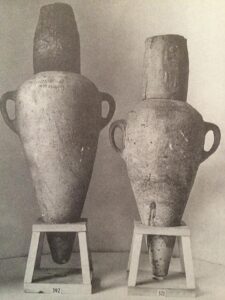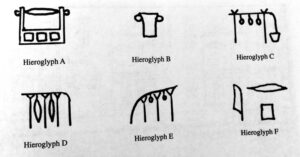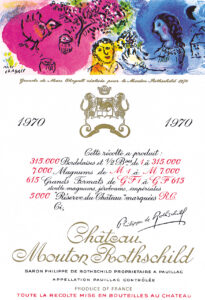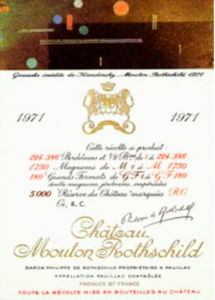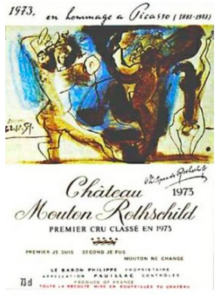Bottle Labels: A History Lesson
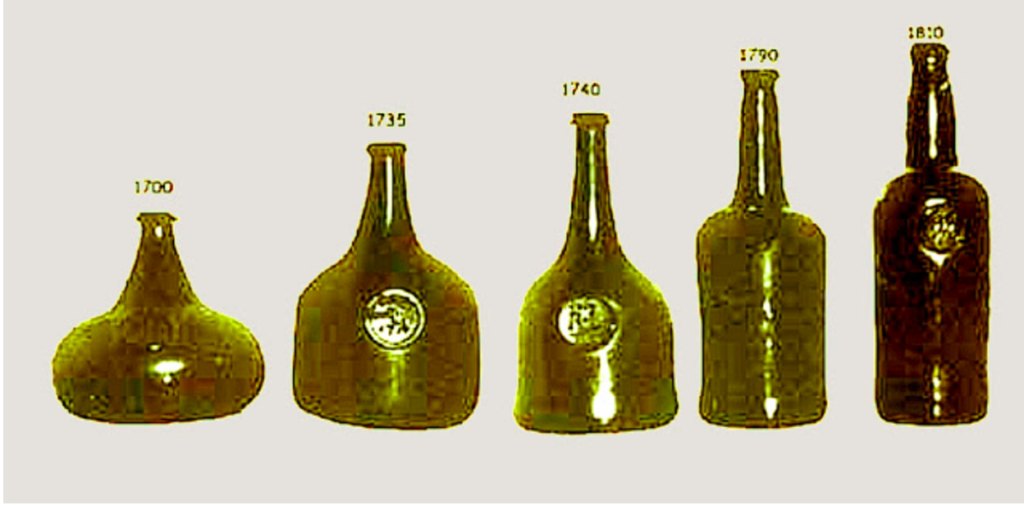
Evolutions of wine bottles since 1970
The History of Wine Bottle Labels
Wine labels appear to date back as far as 1550 B.C. (maybe even farther). Introduced in Egypt, seals and etchings were originally placed on bottles, or amphorae, as a way to make trade easier, but also signified the year, type, and quality of the wines. This eventually became a thing of extreme importance, as is evident in findings from an excavation of King Tut’s burial site that included amphorae from only specific years. So…to sum up this portion of the history lesson: wine snobbery = not a new thing. And without the hieroglyphics to notate the region, the maker, and the year, how would the Good King have known what his favorite vintages were?
By the 18th century, wine trade in Europe was booming, with so-called labels printed on parchment and tied to the bottlenecks with string, much like the hang tags we still see today. And by 1798, labels could be produced in mass, thanks to the invention of the lithograph, and according to one source, led to increased use of color and more emphasis on artistic design. And into ‘70s Europe, winemakers would begin to work with famous artists (Picasso and Chagall, to name a few) to create awe-inspiring bottle labels that would properly represent the quality and unique artistry of the product within. With widespread production of bottle labels, distribution increased and the industry was forever changed.
The History of Beer Bottle Labels
Beer labels don’t have as long a lineage. It wasn’t bottled in mass until the mid-1800s. Before that, customers would bring their own containers marked with a personal identifier, i.e. a family seal or coat of arms. Sound familiar? That’s because growlers have had a big resurgence in the last ten years and are ever growing in popularity. While beer itself dates all the way back to 5,000 B.C., the labeling process is a much newer baby, becoming regular practice in the UK by 1855, and continuing in growth with the expansion of trade and competition. Breweries would set themselves apart by way of symbolism and trademarking (think Bass’ red triangle and Pabst’s namesake blue ribbon). These nod to the history of the brewery and make it easier to recognize, on the shelf or, say, after you’ve had a few.
Bottle Labels Today
From hieroglyphic etchings to impressionist paintings, beer and wine bottle labels have seen a total evolution in design. Today, there are a number of alternative print methods, but what remain of the utmost importance are the pieces of information and the artistry on the bottle labels. The accolades the vintner or brewer have received, the region, the grape, the year; it’s all as vital as the branding and design, and by extension, the print technique. Each label must comply with the Alcoholic Beverage Labeling Act, but is an otherwise unique expression of the product it represents.
Distinctive bottle design customized to the product personality and bottle type will certainly set you apart from the competition. And hiring an artist to design your label? Still highly recommended. Blue Label has a complete directory of designers we love to partner with for this very reason. We have the highest quality custom labels, digitally printed in Lancaster, Ohio, and can turn your product around in three to five business days. So hit us up and let’s talk bottles.
Sources:
https://grapecollective.com/articles/flashbackfriday-how-egypts-wine-labels-rivaled-todays
http://guity-novin.blogspot.com/2012/09/chapter-61-history-of-wine-labels.html
http://yourlabelsnow.com/a-visual-history-of-wine-labels-infographic/
https://retrorambling.wordpress.com/articles/misc-articles/the-history-of-beer-labels/
http://mentalfloss.com/article/56707/meanings-behind-weird-symbols-20-beer-labels
